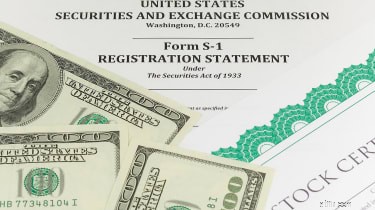
IPO(Initial Public Offering)는 기업이 자본을 확보하기 위해 공개 주식 시장을 활용하는 데 사용하는 프로세스입니다. 그들은 일반적으로 성장을 위한 새로운 연료를 찾는 초기 단계의 비즈니스를 포함합니다. 많은 기회가 작은 기회이지만 소수는 엄청난 잠재력을 가지고 있습니다.
Pets.com 및 Webvan과 같은 폭발이 입증했듯이 IPO는 재물에 대한 보장된 티켓이 아닙니다. 그러나 그들은 폭발적인 수익을 낼 수 있으며 서둘러야 합니다. 9월 말까지 38개의 오퍼링이 50% 이상의 수익률을 보였습니다. 그러나 2018년에 부족한 한 가지는 세계를 뜨겁게 달궜던 Facebook(FB) 또는 Alibaba(BABA)와 같은 제안인 메가 딜입니다. 2019년에는 변경되어야 합니다.
차량 호출 서비스 Uber의 CEO인 Dara Khosrowshahi는 회사가 내년에 IPO를 실행할 것으로 예상한다고 말했습니다. 소매 투자자가 IPO를 구매할 수 있도록 하는 온라인 플랫폼인 ClickIPO의 CEO인 Scott Coyle은 "Uber는 수백만 명의 소비자와 연결되는 널리 알려진 브랜드이며 수년간 투자자들로부터 많은 자본을 받았습니다. 그렇다면 월스트리트 저널이 Goldman Sachs와 Morgan Stanley의 제안에 따르면 회사 가치를 1200억 달러 이상으로 평가했습니다. IPO가 종종 예상 가치의 약 10%에서 15%를 인상한다는 점을 감안할 때 120억~180억 달러의 인상이 될 수 있습니다.
미국에서 가장 큰 IPO 순위는 어디일까요? 오늘은 모금된 금액으로 측정한 미국 역사상 가장 큰 거래 25개를 살펴보겠습니다.

Royal Bank of Scotland(RBS)는 Citizens Financial Group에 4억 4천만 달러를 지불했습니다. (CFG, $34.92) 미국 시장으로의 확장을 위해 1998년에 출시되었습니다. 그러나 2007-08년의 글로벌 금융 위기는 회사의 야망을 무너뜨렸습니다. 420억 달러의 구제금융으로 RBS의 약 80%를 소유한 영국 정부는 Citizens 분사를 추진했습니다.
당시 이 은행은 자산 규모가 1,300억 달러로 미국에서 13번째로 큰 규모였으며, 주로 뉴잉글랜드, 중부 대서양 및 중서부 지역의 11개 주에 있는 약 1,230개 지점에 18,000명 이상의 직원을 고용했습니다.
IPO는 어려운 매도였다. 금리가 역사적으로 낮아 은행들이 견실한 수익을 내기 어려웠고, 미국 경제의 반등도 여전히 부진한 것으로 나타났다. 이 제안의 초기 가격 범위는 주당 $23~$25였으며 Citizens는 $21.50에 불과했습니다. 주식은 거래 첫날 약간 상승했지만 약 7%만 상승했습니다.
그러나 미국 경제(및 금리)는 결국 호전되어 은행주가 강세를 보였습니다. 시민의 주식은 IPO 가격에서 62% 성장했으며 S&P 500 지수는 약 43% 상승했습니다.
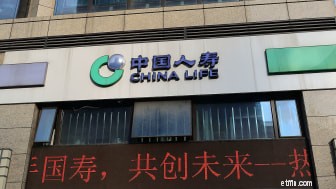
마오쩌둥 정부는 1949년 중국을 장악한 후 몇 주 만에 중국인민보험회사(PICC)를 설립했습니다. 그러나 중국이 1990년대 자본주의로 나아가면서 PICC는 재구성되고 해산된 후 다른 4개 국가로 대체되었습니다. - 중국 생명 보험을 포함한 소유 회사 (LFC, $10.75).
차이나라이프는 2003년 말 상장 당시 국내 최대 생명보험사였다. 방대한 독점 대리점 유통망과 4400만 증권의 실효보험 상품으로 시장 점유율 45%에 달했다. 2003년 수입은 약 5억 4,700만 달러였습니다.
투자자들은 IPO를 당시 GDP가 매년 8~9%씩 성장하고 있던 중국 경제의 강력한 성장에 참여하는 방법으로 보았기 때문에 IPO를 간절히 원했습니다.
LFC의 주가는 거래 첫날 29% 급등했으며, 주가는 2007년 18.68달러에서 최고 35.58달러로 급등하는 등 강세장이 계속될 것입니다. 그러나 금융 위기는 주가에 큰 영향을 주어 최저치까지 떨어졌습니다. 바로 내년까지 $11.15입니다. 그 이후로 차이나라이프는 경쟁과 저금리로 주목받기 어려웠다. 사실, 제안 가격으로 구매한 사람은 지금 상당한 손실을 보고 있습니다.

최근 사망한 Microsoft(MSFT) 공동 창립자 Paul Allen은 1998년 7월에 25억 달러를 현금으로 지출하여 Charter Communications를 인수했습니다. (CHTR, $318.10). 그런 다음 그는 회사를 올해 초 28억 달러에 구입한 다른 케이블 보유 회사인 Marcus Cable과 합병했습니다. 그의 비전은 케이블 회사가 고대역폭 광섬유로 인해 "유선 세계"라고 부르는 인터넷 혁명의 중심이 되는 것이었습니다.
Allen은 또한 1999년 말 Charter Communications를 상장함으로써 급성장하는 IPO 시장을 활용했습니다. 당시 Charter는 620만 명의 가입자를 보유한 미국 4위 케이블 사업자였으며, 그 제안은 케이블 역사상 가장 큰 거래였습니다. . 주식은 거래 첫날 31% 급등했습니다.
Charter는 2009년까지 지속 불가능한 수준에 도달한 부채 부담 증가로 인해 회사가 챕터 11 파산에 따라 구조 조정을 해야 하는 심각한 문제에 직면했습니다. 그러나 그 덕분에 Charter는 막대한 부채를 청산할 수 있었고 회사는 Time Warner Cable과 Bright House Networks를 인수하는 것을 포함하여 앞으로 몇 년 동안 순조롭게 거래를 시작했습니다.
오늘날 Charter는 41개 주에 걸쳐 2,600만 명 이상의 고객을 보유하고 있는 거의 840억 달러에 달하는 회사입니다.

핀란드 정부는 1917년 핀란드 통신 사업자인 Finnish Telegraph Agency를 설립했습니다. 그러나 1990년대에 정부는 통신을 민영화하는 등 변화가 필요하다는 것을 깨닫고 이름을 Sonera로 변경했습니다. .
그러나 핀란드 정부가 약 58%의 통제력을 갖게 된 1999년 IPO는 압도적이었습니다. 주식은 거래 개시일에 단 3.5%의 이익을 창출했습니다.
Sonera의 성장의 핵심 동인은 모바일 시장이었습니다. 참고로 핀란드는 당시 세계 최대 핸드셋 제조업체 중 하나인 Nokia(NOK)의 본거지였으며 Sonera 매출의 약 65%가 모바일에서 발생했습니다.
그러나 Sonera의 제안 이후 몇 년 동안 성장이 어려운 것으로 판명되었고 회사는 차세대 네트워크를 구축하는 데 급증하는 비용에 직면했으며 닷컴 불황은 기술 분야 전체에 부정적인 영향을 미치고 있었습니다. 이러한 모든 요인으로 인해 Sonera는 2002년 스웨덴 통신 사업자 Telia(TLSNY)와 합병했습니다.
이 이동으로 규모가 추가되었고 시간이 지남에 따라 합병된 기업은 인수를 통해 훨씬 더 성장할 수 있었습니다. 이제 Telia는 노르딕 및 발트해 지역의 선도적인 모바일, 고정 음성 및 광대역 회사로 통합 가입자 기반은 2,310만 명입니다.

Stanford 학생 Evan Spiegel과 Bobby Murphy가 Snap 을 설립했습니다. (SNAP, $6.81) 2011년 9월. 이 회사는 Snapchat 소셜 미디어 앱을 기반으로 했으며 사진과 메시지를 아주 짧은 시간 안에 사라지게 하는 기능으로 인해 눈에 띄었습니다.
이 앱은 빠르게 불을 붙이며 수백만 명의(대부분 젊은) 사용자를 끌어들였습니다. Facebook의 Mark Zuckeberg는 2013년에 회사를 인수하기 위해 30억 달러를 제안할 정도로 기회를 너무 많이 생각했습니다. 그러나 Spiegel과 Murphy는 자신의 운명을 통제하기를 원했고 결국 2017년 4월에 Snap을 공개했습니다.
SNAP 주식은 거래 첫날 44% 급등하여 공동 설립자들을 밤새 억만장자로 만들었습니다. 관심이 높았습니다. 결국 회사는 2015년 5,870만 달러에서 2016년 4억 4,500만 달러로의 성장을 포함하여 기업 공개 당시 수익이 크게 증가했다고 보고했습니다. 그러나 이러한 엄청난 2016년 수익은 여전히 5억 1,460만 달러의 순 손실을 기록했습니다.
공개 회사로서의 Snap의 삶은 대부분 실망스러웠습니다. 회사는 계속해서 9자릿수 분기별 순손실을 겪고 있으며, 2012년에 Facebook이 인수한 Instagram은 2018년 2분기에 실제로 감소한 Snap의 사용자 기반을 제한했습니다. 한편, SNAP 주식은 공모가에서 60% 하락했습니다. $17.
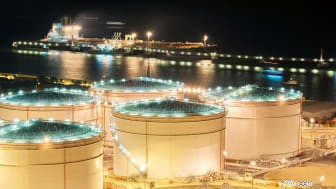
국영 중국 석유 및 화학 (SNP, $81.31) – 일반적으로 Sinopec으로 알려져 있음 – 상장되어 PetroChina(PTR)에 이어 중국에서 두 번째로 큰 석유 회사였습니다. 그러나 정부는 운영을 현대화하고 성장을 위한 자본을 조달하기를 원했기 때문에 회사를 공개했습니다.
IPO는 Exxon Mobil(XOM), BP Amoco(현재는 BP plc(BP)) 및 Royal Dutch Shell(RDS.B)이 공동으로 공모의 47.5%를 인수하면서 Big Oil의 큰 관심을 끌었습니다. 그리고 주식은 미국, 런던, 홍콩에 상장되었습니다. 그러나 제도적 흥분에도 불구하고 첫날 실적은 0.48%에 불과했습니다.
그러나 값싼 밸류에이션은 저렴한 가격의 사냥꾼을 주식으로 끌어들였으며, 불과 몇 년 만에 두 배가 될 것입니다. 그리고 사실, IPO 이후 주식은 2015년 13:10 주식 분할을 포함하여 5배 이상 증가했습니다. 회사는 오늘날에도 계속해서 좋은 성과를 거두고 있습니다. 2018년 상반기에 62억 달러의 순이익을 올렸습니다. 이는 회사의 사상 최대 반기 이익입니다.

월스트리트는 Lucent가 Agere Systems의 IPO를 신청했을 때 처음에 관심을 보였습니다. 유닛, 광전자 부품 회사. 그러나 주당 $12~$14의 초기 가격 범위는 결국 $6의 공모 가격으로 줄어들었습니다. 그때도 수요는 미미하여 거래 첫날 주가가 주당 2센트 상승하는 데 그쳤습니다.
컨텍스트:닷컴 열풍이 최근에 종료되어 IT 지출이 크게 감소했습니다. Lucent는 또한 25억 달러 이상의 부채를 Agere로 이전했으며 IPO 전에 수익 경고를 발행하기도 했습니다.
돌이켜보면 거래가 성사되었다는 것이 놀랍습니다.
그러나 일찍 주식을 사서 보유한 용감한 투자자들은 많은 보상을 받았습니다. 5년 후 Agere는 LSI 주식을 주당 22.81달러에 경쟁사인 LSI Logic에 매각했습니다. 이는 신도들에게 약 280%의 수익을 가져다 준 것입니다.

투자 은행 골드만 삭스 (GS, $224.95)는 1990년대 강세장에서 가장 큰 수혜자 중 하나였습니다. 이 회사는 그 시대의 유명 제품 중 상당수를 인수했으며 자산 관리, M&A 자문 및 거래에서 수익성 있는 사업을 운영했습니다.
그러나 1998년 IPO에 대한 회사의 첫 시도는 아시아 금융 위기로 인한 불확실성으로 인해 철회되었습니다. 하지만 1년 후 시장이 다시 정상화되자 Goldman은 성공적으로 거래를 성사시켰고 거래 첫날 주가가 33%나 뛰었습니다.
IPO는 상당한 부를 창출했습니다. Goldman Sachs의 221개 파트너는 평균 6,300만 달러 이상의 주식을 보유하고 있었습니다.
Goldman은 (다른 많은 회사와 마찬가지로) 닷컴 거품이 터진 후 약간의 고통을 느꼈지만 금융 위기와 약세 시장이 모든 것을 지우기 전에 주가가 60달러 초반에서 240달러 초반으로 거의 4배 가까이 급등하면서 빠르게 발판을 찾았습니다. 이러한 이익으로 인해 주가는 다시 60달러로 떨어졌습니다.
그러나 Warren Buffett의 Berkshire Hathaway(BRK.B)는 2008년에 회사에 50억 달러를 내기로 했습니다. 이는 매우 필요한 승인 스탬프 역할을 했습니다. GS는 2018년 초에 사상 최고치를 경신했으며 올해에는 버핏이 지분을 추가하기도 했습니다.

네덜란드 엔지니어링 회사 GEC-Alsthom NV는 1998년에 공개되기 전에 새로운 로고와 새롭고 단순한 이름인 Alstom을 포함하여 메시지를 일부 변경했습니다. (ALSMY, $4.31).
이 회사는 General Electric Company(영국)와 대형 통신 장비 제조업체인 Alcatel이 공동 소유했습니다. 알스톰의 사업 부문에는 통신, 발전 및 송전 장비가 포함됩니다. 그러나 아마도 회사에서 가장 주목할만한 부분은 유로스타를 포함한 고속 열차 시스템이었습니다. 유로스타는 런던을 Channel Tunnel을 통해 여러 유럽 대륙 국가로 연결하는 서비스입니다.
1990년대 후반 IPO 시장은 뜨거웠지만 Alstom의 거래는 미지근한 반응을 얻었고 주가는 빠르게 제안 가격 아래로 떨어졌습니다. 그것은 일종의 징조였습니다. 2003년에 회사는 거의 파산 신청을 해야 했습니다. Alstom은 가스터빈 설계 결함으로 인해 연간 1,495억 달러의 손실을 보고했으며, 엄청난 부채에 시달리고 있었습니다. 운영을 강화하기 위해 정부는 유럽 연합과의 장기간의 협상을 포함하는 30억 달러의 구제금융 계획을 제공했습니다.
Alstom은 2015년에 전력 사업을 General Electric(GE)에 140억 달러에 매각했습니다. 나머지 회사는 핑크 시트에서 ALSMY로 거래됩니다.
한 가지 관심 사항:GE 거래에 관한 프랑스 정부 고문 중 한 명이 2017년에 대통령이 될 에마뉘엘 마크롱이었습니다.

병원 운영자 HCA Healthcare (HCA, $136.37)는 1969년 Hospital Corporation of America로 처음 공개되었습니다. 거기에서 회사는 업계를 통합하기 위해 공격적인 M&A 전략에 집중하여 궁극적으로 업계의 지배자가 되었습니다. 1980년대 후반까지 경영진은 회사를 비공개로 전환한 다음 1992년에 또 다른 IPO를 시작했습니다.
KKR &Co.(KKR)가 210억 달러에 HCA를 인수한 2006년에도 앞뒤가 맞지 않는 거래가 계속되었습니다. 불과 5년 후 KKR은 회사를 공개 시장으로 되돌릴 것입니다.
HCA Holdings라는 이름으로 발생한 제안에는 몇 가지 주목할만한 문제가있었습니다. 약 270억 달러의 막대한 부채 부담과 메디케어 규정에 대한 불확실성이 있었습니다. 그러나 HCA의 비교적 안정적인 현금 흐름 덕분에 월스트리트는 이 제안을 수용했습니다.
현재 20개 주와 영국에 걸쳐 178개의 병원과 119개의 독립 수술 센터를 운영하고 있는 이 회사는 2017년에 이름을 HCA Healthcare로 변경했습니다. 의심할 여지 없이 승자입니다. HCA의 주가는 30달러의 제안 가격에서 4배 이상 뛰었습니다.

Primerica acquired Travelers in 1993, first keeping the name, then tweaking it to The Travelers Group. It later merged with Citicorp to become Citigroup (C). However, the merger process was a rocky one, and Travelers was spun off in 2002 in what at the time was the largest insurance offering.
The company has bulked up via acquisitions ever since its 2002 offering, including a $16.4 billion merger with The St. Paul Companies, using the St. Paul name until 2007, when it switched to The Travelers Companies – and the popular red-umbrella logo most people know it by today.
Today, TRV is a roughly $34 billion company that’s tops in homeowners insurance writing through independent agents and top-three in personal insurance.

A key to the success for the Blackstone Group (BX, $35.30), a private equity firm, has been its ability to anticipate major market cycles. So it should surprise nobody that Blackstone’s IPO was impeccably timed.
Blackstone went public near the peak of the private-equity boom, and a year before the financial crisis took hold.
The IPO was a big-time payday for the firm’s co-founders; CEO Stephen Schwarzman snagged $677 million, while Peter Peterson pulled down a cool $1.9 billion.
Blackstone Group has continued to be dominant in the PE world, boasting $439 billion in assets under management as of Q2 2018. Share performance has been underwhelming, gaining only about 14% from the IPO price, though investors have reaped considerable dividends since then, too.

In 1875, Isaac Elder Blake founded Continental Oil and Transportation Company, which was focused on oil, kerosene and other chemical products. He sold Continental to Standard Oil in 1884, but it was spun off in 1911 as part of a monopoly breakup.
Over the years, the company bulked up via acquisitions and eventually changed its name to Conoco. DuPont eventually acquired the company during the go-go 1980s takeover era, taking advantage of shares that were depressed because of a plunge in oil prices. But the companies weren’t a good fit, and Conoco was once again shed off, via an IPO.
The 1998 offering raised $4.4 billion – a record at the time. When Conoco went public, it was the sixth-largest oil company in the U.S., boasting a network of 7,900 gas stations.
Conoco eventually merged with Phillips Petroleum to form ConocoPhilips (COP, $72.59). The company today is the world’s largest independent exploration and production company (by production and proven reserves), with operations in 17 countries.

Conglomerate Tyco bought top business lender CIT in 2001, then tried unsuccessfully to sell it back off in early 2002. So, management switched gears and spinned it off with an IPO instead.
Wall Street wasn’t very enthusiastic about the CIT Group (CIT, $48.34) deal, in part because Tyco CEO Dennis Kozlowski had abruptly resigned a month earlier over reports he was being investigated over dodging taxes. The IPO priced below its original range, and the shares fell by 4% on their first day of trading. Still, the offering raised a hefty $4.6 billion … most of which was used to pay down Tyco’s massive debt load, which it accumulated because of an aggressive M&A spree.
The company eventually had to file for bankruptcy in late 2009 amid the financial crisis, and shareholders were wiped out. But CIT Group remained, albeit with a massive restructuring. Today, CIT Group is a Fortune 1000 company with about $50 billion in assets.
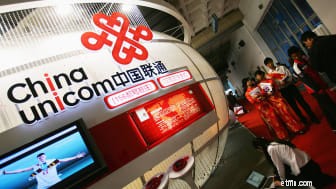
By summer 2000, American markets were under intense pressure from the dot-com bubble burst, but that didn’t deter Chinese telecom company China Unicom (CHU, $11.12). The company pulled off a $4.9 billion deal – at the time, the largest by a Chinese company – to list on the New York Stock Exchange, and even managed to gain 12% on its first day. (Shares also were offered in Hong Kong.)
China Unicom, the second largest telecom company in China at the time, was a division of state-run China United Telecommunications. CHU held about 14% market share, including strong footprints in Beijing, Shanghai and Tianjin. Half of its revenues came from paging.
The IPO hasn’t been a good long-term holding, however. The stock’s price has retreated 44% from their offering price of $19.99.

In 2000, German chipmaker Infineon Technologies (IFNNY, $20.78) wanted to get a piece of the dot-com action in the U.S. – and it worked. The deal was the second-biggest for a German company – second only to Deutsche Telekom (DTEGY) – and shares more than doubled, to $70 per share from a $33.92 offering price.
Infineon was a division of old-line industrial operator Siemens (SI) and was ranked No. 10 in the world among chipmakers, in terms of total sales. Siemens, by the way, had enjoyed dealmaking success a year earlier with an IPO of its Epcos division.
Infineon Technologies delisted from the New York Stock Exchange in 2007, but still trades on the Frankfurt Exchange, as well as over-the-counter in the U.S. It has a strong footprint in key markets such as self-driving vehicles and the Internet of Things. Its power and smart card ICs are No. 1 in market share, and the company is No. 2 in automotive semiconductor market share.

In 1907, James Casey created American Messenger Company, which offered parcel and special-mail service primarily by foot and bicycle. However, it upgraded its “fleet” with its first Ford Model T in 1913, and six years later, it took on the name we know it by now:United Parcel Service (UPS, $114.73).
UPS built a massive business without much need for outside capital. In fact, UPS didn’t go public until 1999 – compare that to rival FedEx (FDX), which was founded in 1971 and went public in 1978.
Demand for the UPS IPO was so robust that the deal had to be delayed by 45 minutes. Shares ended their first day of trading up $36%. And unlike many offerings, employees collected a nice windfall – they collectively owned about a third of the company’s shares.
The actual performance of UPS has been a little above-average, with gains of about 130% from its listing price versus 102% for the S&P 500.

Telecom Eireann was owned by the Irish government, which allocated a hefty 55% of the stock to individual investors. More than 500,000 people, or over 20% of Ireland’s adult population– 60% of whom were first-time investors – joined in.
The company, which was renamed Eircom, still was relatively small among the world’s telecom giants at the time, with 1.5 million phone lines and 645,000 mobile customers.
The company split into two divisions in 2000 – a mobile business and a fixed-line business. The mobile division sold out a year later to Vodafone (VOD) and a consortium of buyers.

Philip Morris International (PM), which had purchased Nabisco in 2000, spun off Kraft Foods in 2001, using much of the offering’s proceeds to pay down debt from the acquisition.
Kraft Foods at the time had a nice portfolio of brands, including Kraft Macaroni &Cheese, Maxwell House, Philadelphia Cream Cheese, Oreo cookies and Oscar Mayer. It also had an interesting leadership structures that included co-CEOs, and Philip Morris’ CEO was the chairman.
Nonetheless, the IPO spurred little investor interest, with shares rising just 1% on their first day of trading.
In 2012, Kraft announced it would split off its North American grocery business as Kraft Foods Group, with the remaining snack-foods company to be renamed Mondelez International (MDLZ). Three years later, Kraft Foods Group merged with Heinz to become Kraft Heinz (KHC, $55.54) in a deal facilitated by Warren Buffett’s Berkshire Hathaway and global investment firm 3G Capital.

The AT&T Wireless IPO came at the peak of the dot-com boom, as parent company AT&T wanted to capitalize on the frenzy. The deal was done by issuing “tracking stock.” This tracking stock essentially trades based on the performance of a company’s division, but doesn’t require the company to yield any control of the unit or spin off the division’s actual operations.
AT&T Wireless was growing at a fast pace, as were other mobile companies including Sprint (S) and Nextel. Revenues spiked by 41% year-over-year to $7.6 billion in 1999 and boasted 12 million subscribers. So no one was surprised when AT&T raised a then-record $10.6 billion, a year after UPS’ $5.5 billion raise.
AT&T Wireless eventually sold out to Cingular Wireless – itself a joint venture between SBC Communications and BellSouth, which were broken off from the original AT&T – in 2004 for $41 billion. SBC eventually took on the AT&T brand as AT&T Inc. (T, $32.50).
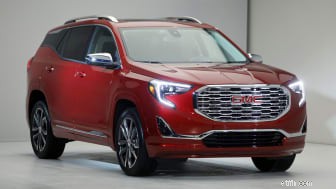
However, it was not immune to the financial crisis, and it in fact succumbed in June 2009, when it filed for bankruptcy. This included a $50 billion bailout from the federal government that sparked the nickname “Government Motors.”
But GM was able to get its house in order. The company worked aggressively to cut costs, streamline operations, revamp the lineup and invest more in the Chinese market. The result? General Motors was able to launch a successful IPO a couple years later. It reduced its obligations to the U.S. government by $22 billion (and fully paid off the government by 2015), and it made a $4.7 billion profit in 2011 – its first positive annual earnings since 2004.
The stock, on a price basis, is actually in the red since its IPO. But that has created an income opportunity for new money, with shares yielding 4.9% as of this writing.

There was plenty of drama in the lead-up to the Facebook (FB, $154.92) IPO. Facebook’s prospectus noted that user-base growth likely would slow. The mobile side of the business was lagging. And CEO Mark Zuckerberg didn’t win any friends when he wore a hoodie to his investor presentation, leading many to believe he had a lackadaisical attitude toward the process.
The day-of was no better. Facebook’s deal pricing was delayed because of a Nasdaq glitch that resulted in roughly $500 million in losses across numerous Facebook investors.
The situation got worse in the next few months, as Facebook plunged below $20 per share.
Zuckeberg didn’t flinch. He swiftly focused on investing in mobile, including upgrading the original Facebook app and also making deals for image-based social media company Instagram and messaging service WhatsApp. Facebook more than recovered, hitting an all-time high above $218 earlier this year – a roughly 475% return on the original price.
The social media giant is facing new challenges, including a slowdown of its growth ramp, privacy issues and cybersecurity weaknesses. But it’s still one of the 10 largest companies trading on U.S. markets – not bad for a company that’s only been around since 2004.

Italian utility company Enel SpA (ENLAY, $4.89) had a few things weigh on its IPO – namely, it was a utility (which doesn’t tend to gin up excitement), and it was a foreign operation, which also tends to hurt interest.
Wall Street’s reception was an unsurprising yawn. Yes, Enel became the largest publicly traded utility in the world, but the company’s shares barely budged on their first day of trading, crawling ahead by just 0.33%.
Another interesting wrinkle:Enel was state-owned. The Italian government actually used the deal to bolster its treasury, as part of a wide-scale policy of privatization and attempting to adopt the euro.
But while the Enel IPO was the second-largest deal raise in U.S. market history, the stock never got much traction. By 2007, management chose to delist from the NYSE because of low trading volumes.
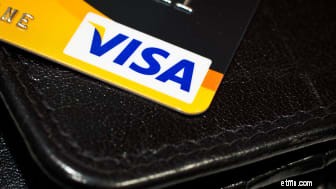
On March 16, JPMorgan Chase (JPM) agreed to buy Bear Stearns in March 2008 for a mere $2 per share – a 93% discount to the prior close (and a price that eventually would be moved up to $10 per share) – in a deal that involved a $30 billion loan from the Federal Reserve. It sent shockwaves across Wall Street, as investors started to worry about America’s largest financial institutions.
This was the environment Visa (V, $139.29) had to contend with when, a couple days later, it pulled off its IPO.
This was a gutsy move by management, who wanted to make a statement that Visa was in solid financial condition. Visa operated the world’s largest payments system and was owned by about 13,000 financial institutions. At the time, it had about 1.5 billion cards in use, compared to 916 million for rival MasterCard (MA). And Wall Street cheered the offering, driving V shares up 28% on their opening day.
Anyone willing to invest in Visa during this time is doing cartwheels today. Visa’s stock has jumped by roughly 1,160% from the offer price, including a 4-for-1 split in 2015.

Chinese e-commerce giant Alibaba (BABA, $142.02) launched in April 1999 with 18 founders including charismatic leader Jack Ma. Ma, a former English teacher, had little business or technology experience, but he did have a compelling vision:to create a massive marketplace where Chinese businesses could sell their wares in China as well as global markets.
Alibaba’s early days were challenging – funding was difficult to come by as tech companies were folding left and right in the dot-com bubble bust – the company still got traction and eventually built a powerful ecosystem. By the time it launched its 2014 IPO, the company was earning roughly $3.8 billion in annual net income, from 279 million active buyers.
Alibaba’s business has since spread to other areas such as cloud computing, digital media and even self-driving vehicles. That has driven a roughly 110% return in just four years, and turned Alibaba into one of the 10 largest U.S.-traded stocks by market cap.